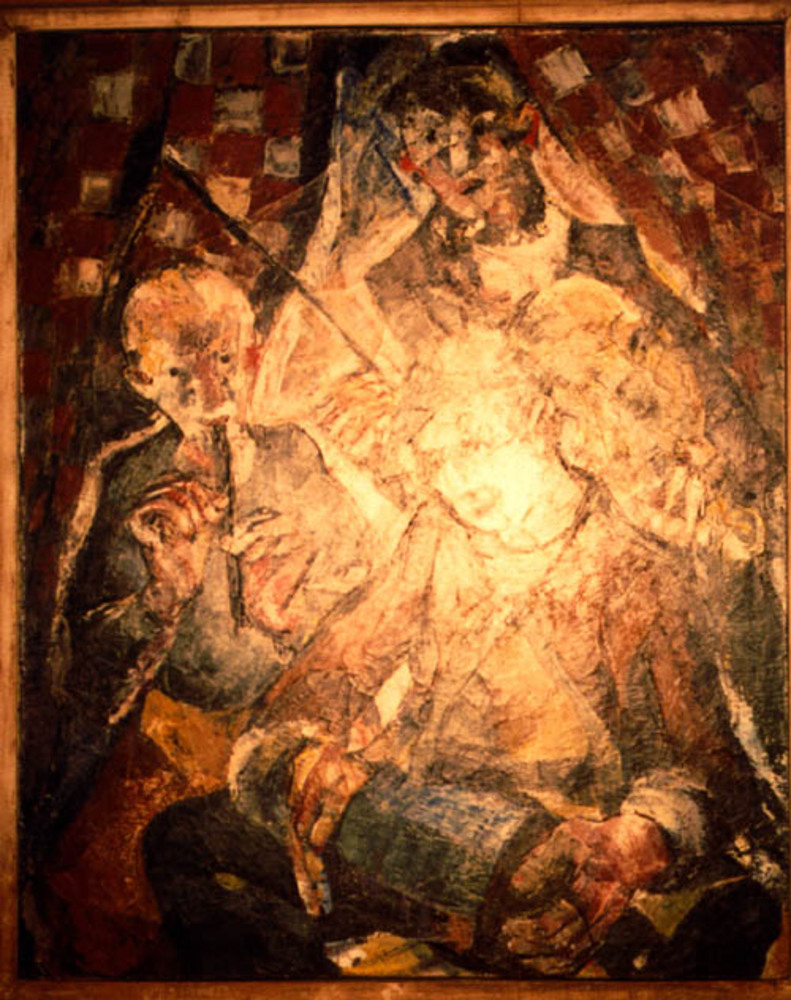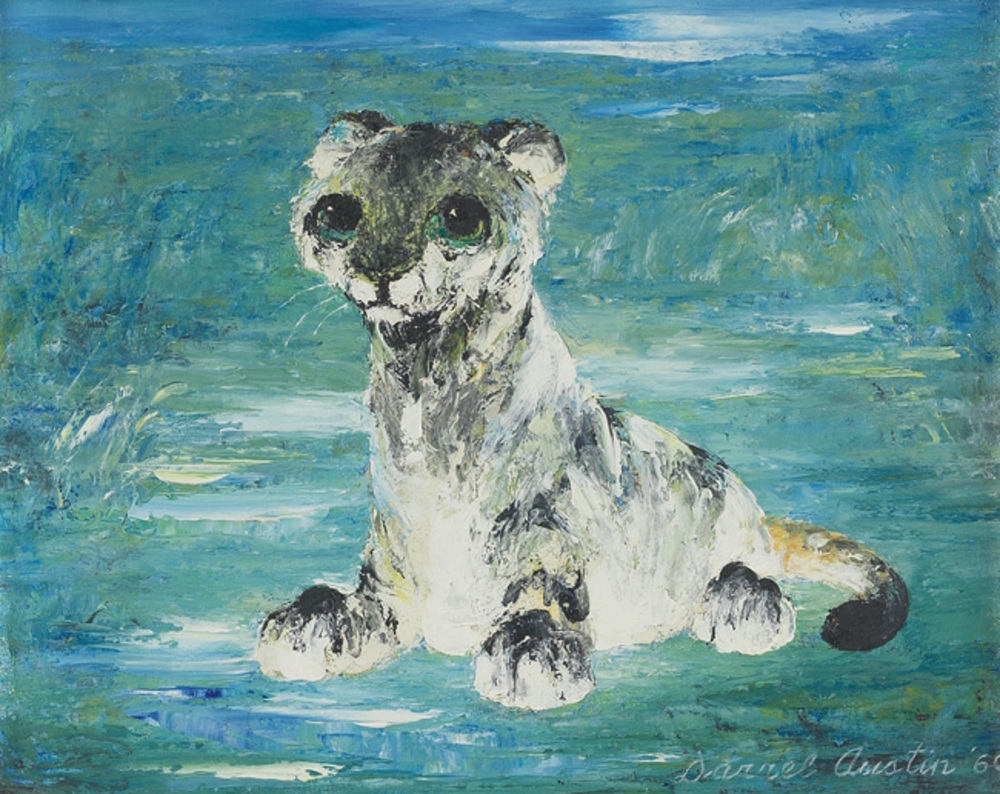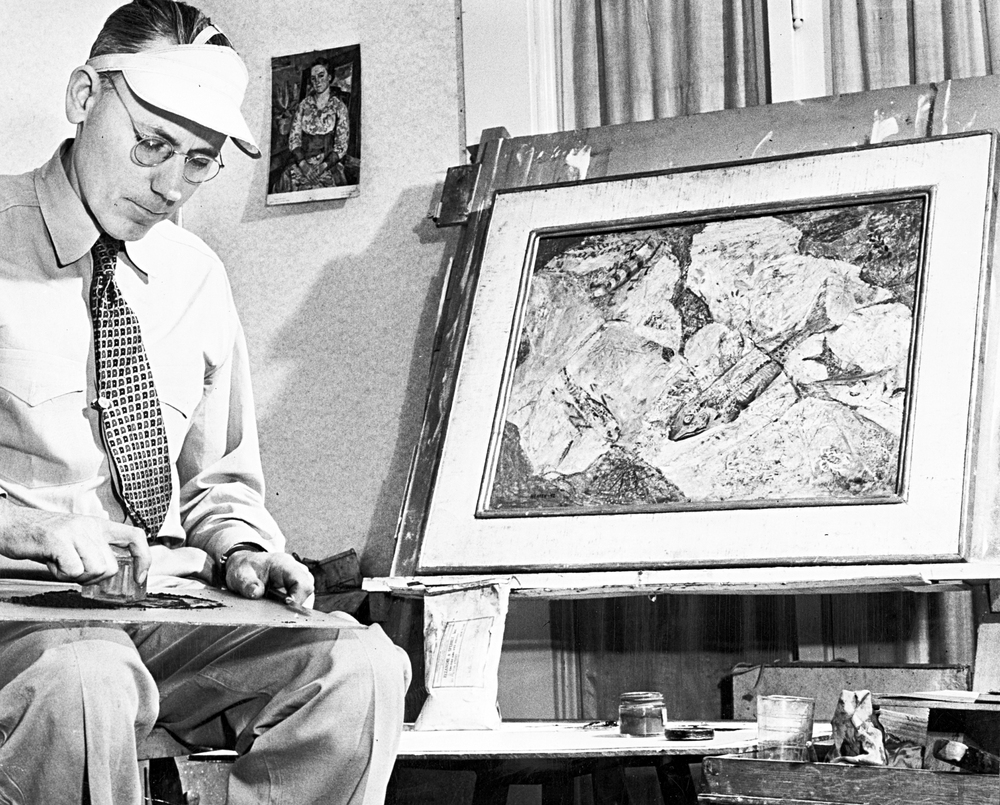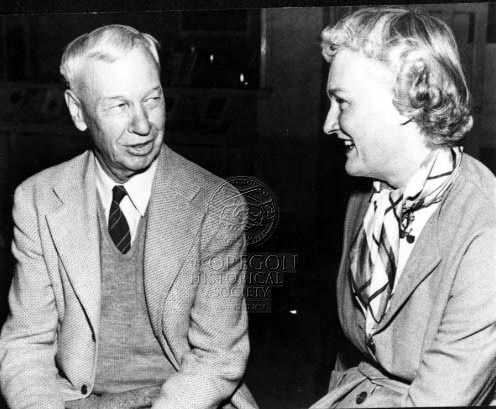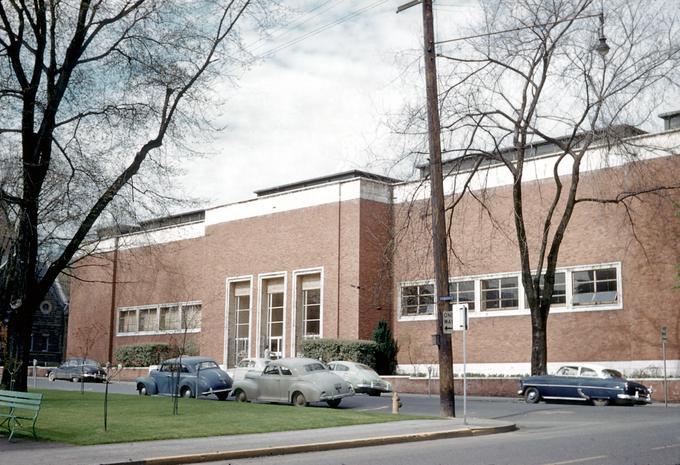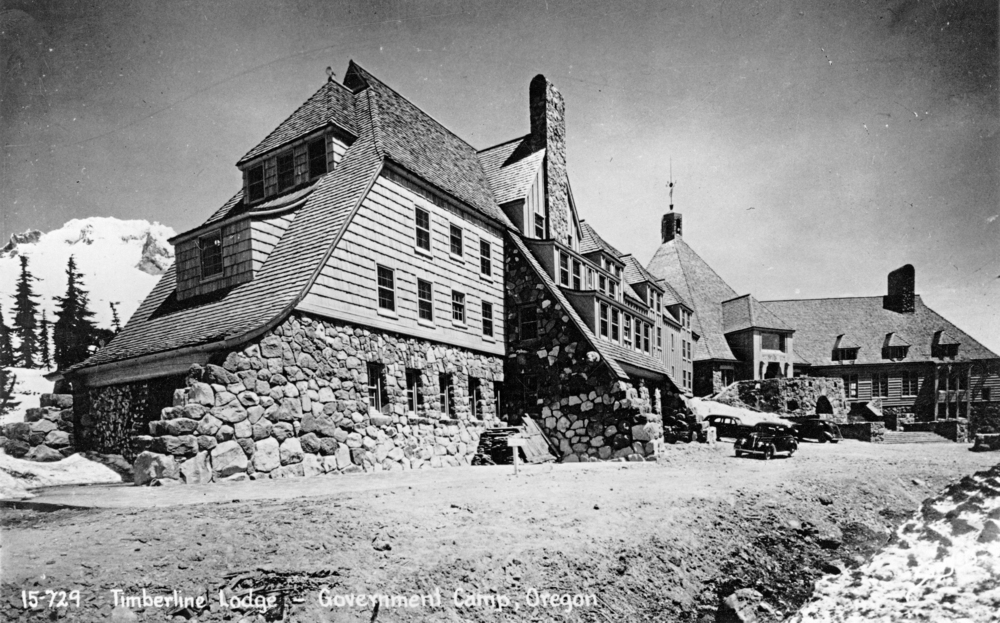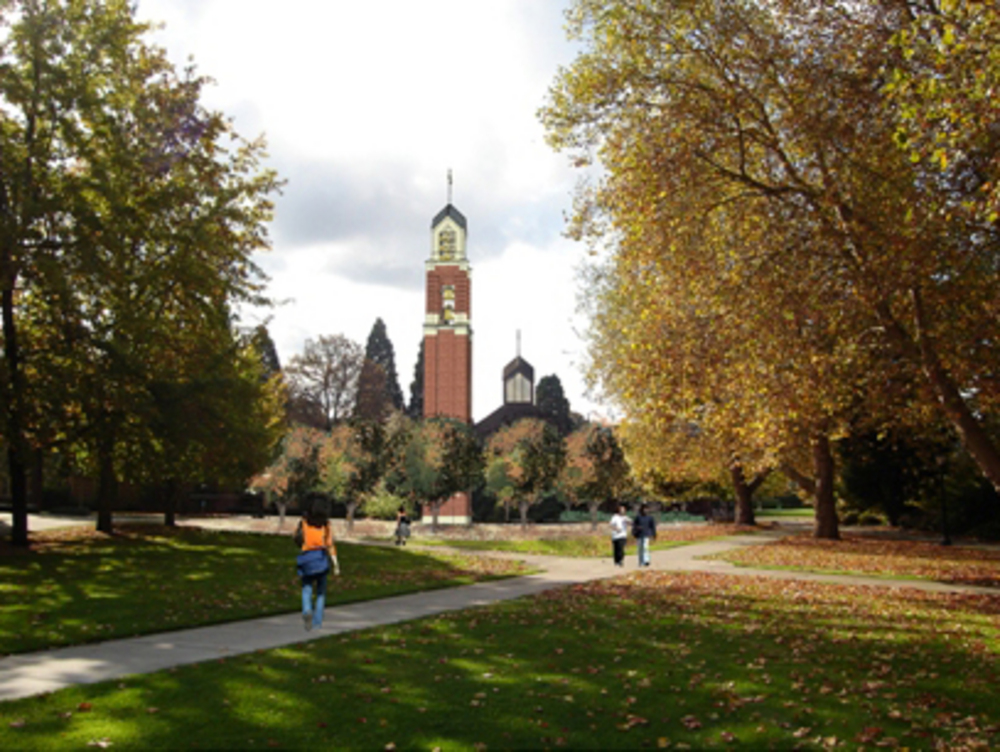Darrel Austin, an Oregon artist who gained a national reputation, was born in Raymond, Washington on June 25, 1907. His family moved to Portland in 1909. As a young adult, he attended the University of Portland, where he studied with Emil Jacques, a Flemish artist. He took private lessons in Jacques's studio, and it was there that Austin met Charles Heaney and C.S. Price, two Oregon artists who had a great influence on his work.
In 1927, Austin began his career as a commercial artist with the Kleeb Art Service. He assisted Jacques with a mural commission for St. Mary's Cathedral in Portland and accompanied him to South Bend, Indiana, to complete the commission. Returning to Portland, he was hired for the Works Progress Administration (WPA) program and began a mural for the University of Oregon Medical School (now Oregon Health & Science University) in 1936. The Evolution of Medical Education consisted of four six-by-eight-foot panels representing ignorance, doubt, revolt, and triumph. These brilliantly colored works, done in the style of Mexican murals, immediately caused controversy among conservative Portlanders, who found the murals to be too modern. The panels hung at the school for sixteen years, until they were removed during a 1952 remodeling. When the Smithsonian Institution asked about the murals in 1976, hoping to include them in the National Collection of Fine Arts, they could not be located.
Austin produced at least sixteen paintings for the WPA. Four of them—The Dishwashers, The Musicians, The Woodchoppers, and The Skier—are on view at Timberline Lodge. The fifth, Fish Story, originally hung at Tongue Point Navel Base; it is now on view at Grant High School in Portland.
In 1938, Austin and his wife, artist Margot Helser, moved to Los Angeles, where he had a successful one-person show at the Howard Putzel Gallery. One critic compared his use of color to that of Van Gogh. They moved to New York in 1940, where his one person show at The Perls Gallery brought great critical and popular acclaim. Owner Klaus Perls became his sole representative, an association that lasted the rest of Austin's life.
Austin changed from figurative painting to landscapes, mythical scenes populated by animals and elongated, wraithlike figures. He applied his paint with a palette knife that produced a "limpid transparency and eerie phosphorescence," according to the June 1, 1942, Time Magazine. Austin's shows were always well received and financially successful.
In 1944, Austin moved with his wife to New Fairfield, Connecticut, where he lived until his death in 1994. His work is now represented in many public and private collections, including the Portland Art Museum, the Oregon Historical Society, the Metropolitan Museum of Art, the Museum of Modern Art, The Phillips Collection in Washington, D.C., and the Museum of Fine Arts in Boston.
-
![]()
"The Musicians," by Darrell Austin, 1936.
www.wpamurals.com
-
![]()
"The Dishwashers," Darrel Austin, 1936.
Courtesy WPA Murals
-
![]()
"The Young Beast," by Darrell Austin, 1959.
Courtesy Treadway Gallery
Related Entries
-
![Charles Edward Heaney (1897-1981)]()
Charles Edward Heaney (1897-1981)
Charles Heaney was a printmaker and painter in Oregon for nearly sixty …
-
![Clayton Sumner (C.S.) Price (1874-1950)]()
Clayton Sumner (C.S.) Price (1874-1950)
Clayton Sumner (C.S.) Price, a pioneering American expressionist, made …
-
![Portland Art Museum]()
Portland Art Museum
The Portland Art Museum, which opened in 1895 in the city library with …
-
![Timberline Lodge]()
Timberline Lodge
Timberline Lodge is the showplace for Works Progress Administration pro…
-
![University of Portland]()
University of Portland
"Founded on a bluff and run on that principle," as historian Jim Covert…
Map This on the Oregon History WayFinder
The Oregon History Wayfinder is an interactive map that identifies significant places, people, and events in Oregon history.
Further Reading
Allen, Ginny, and Jody Klevit. Oregon Painters the First Hundred Years 1859-1959. Portland: Oregon Historical Society Press, 1999.
New York Times, August 20, 1994.

